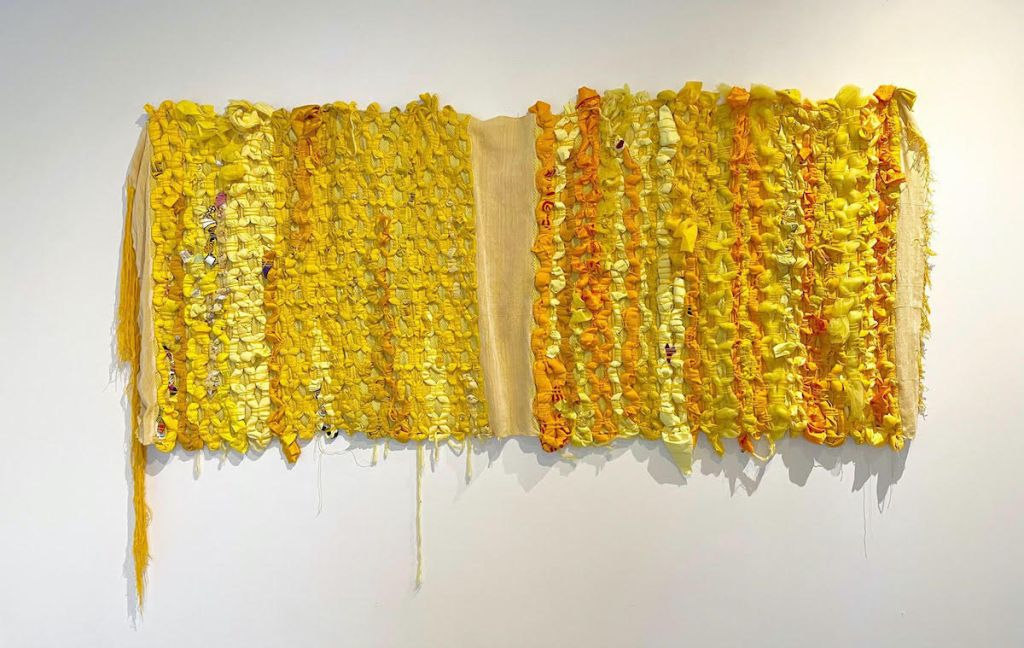Beyond the standard art historical idea of a school or a movement lies the territory suggested by significant aesthetic trends that seemingly exceed conscious intention. ORGANIC, the current show at Sullivan Goss, An American Gallery, offers a snapshot of one such sprawling and manifold tendency in contemporary art. “Organic,” one of the 21st century’s most popular (and unreliable) words, refers in this case to the blurring of boundaries and the celebration of overlaps between art objects and the shapes and materials of the natural world.
The show gives 23 artists a chance to revel in the complexity of perception that underlies our sense of what is, and what is not, natural. Perhaps it’s the impact of climate change, which seems to call so many of our prior certainties into question, that has brought this to the fore. Yet judging from the timeframe of ORGANIC, which reaches as far back as the middle of the 20th century, anxiety about nature has been with us for much longer than we might at first imagine.
It’s certainly there in the direct metal sculpture of Harry Bertoia, whose “Double Bush with Triple Tips (c. 1977)” radiates a certain menace. Fashioned of bronze and copper, this bush would easily survive a wildfire, with or without you. Nearby on the wall, an untitled wood sculpture by Charles Arnoldi from approximately the same era — 1974 — exists in a perfectly calibrated balance between the organic and the geometric, suggesting once again that nature and artifice can coexist.
The earliest work in the show, “California Poppies II [California Springtime], c. 1920,” a painting by Nell Brooker Mayhew, can’t be seen today without conjuring memories of the extraordinarily Instagrammable super bloom of 2019, with its attendant array of questions about nature, art, and commerce. It makes a glorious counterpoint to one of the exhibits most recent works, “Plenty” (2021), a large textile work by recent CalArts grad Minga Opazo.
ORGANIC gives Santa Barbara a second chance to experience Opazo’s work after Siempre Mas/Always More, her solo show at the Architectural Foundation last summer. Born and raised in Chile before attending Berkeley and CalArts, Opazo’s work with textiles involves an extended meditation on the impact of globalization on what was at one time a revered traditional art form. After United States intervention helped to depose Salvador Allende and instate the dictator Augusto Pinochet in the early 1970s, Chile became the target of massive dumps of cheap synthetic fabrics, the price of which undermined the market for Chilean textiles, and the chemical composition of which damaged the country’s ecosystem.
Working with bales of surplus fabric that sometimes weigh as much as one ton, Opazo fashions complex objects that trace the loss of her country’s indigenous practices through geopolitics while at the same time holding onto the capacity for aesthetic experience. “Plenty” weaves together scraps of yellow cloth with discarded buttons and other detritus of the fast fashion industry into a disarmingly beautiful tapestry.
Other artists working in textiles include Elisa Ortega Montilla, here represented by a series of slyly charming reliefs called “Lacescapes,” and Hannah Vainstein, whose 2021 work “Blissed Out” gives the show its entrance moment. Stephanie Dotson, Sommer Roman, Nathan Hayden, and the Yarn Bomber (a k a Stephen Duneier) are all here, each contributing another angle on the use of textiles.
Ceramicists Linda and James Haggerty, Patrick Hall, Brad Miller, Chris Rupp, and Lynda Weinman contribute delicious objects. Weinman’s fanciful names for her series of 3-D-printed pieces — “Curlzy,” “Weavzy,” and “Frizzly” — provide a light touch that’s in keeping with the spirit of this thoughtful yet summery exhibit.
Support the Santa Barbara Independent through a long-term or a single contribution.

